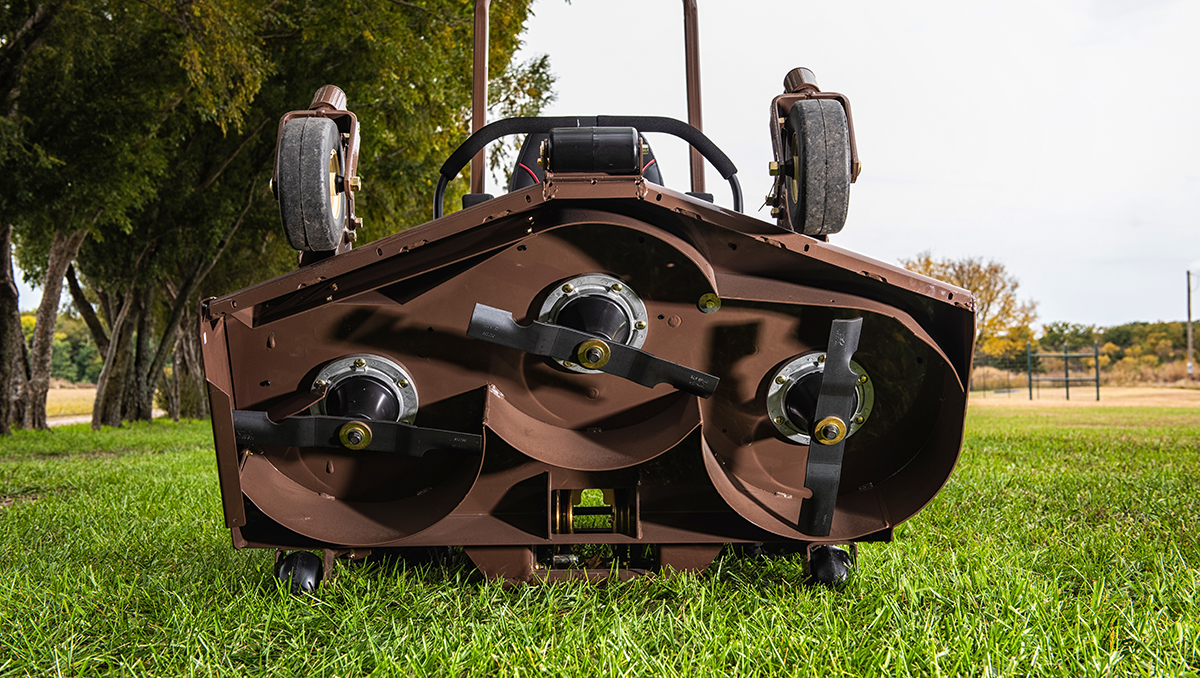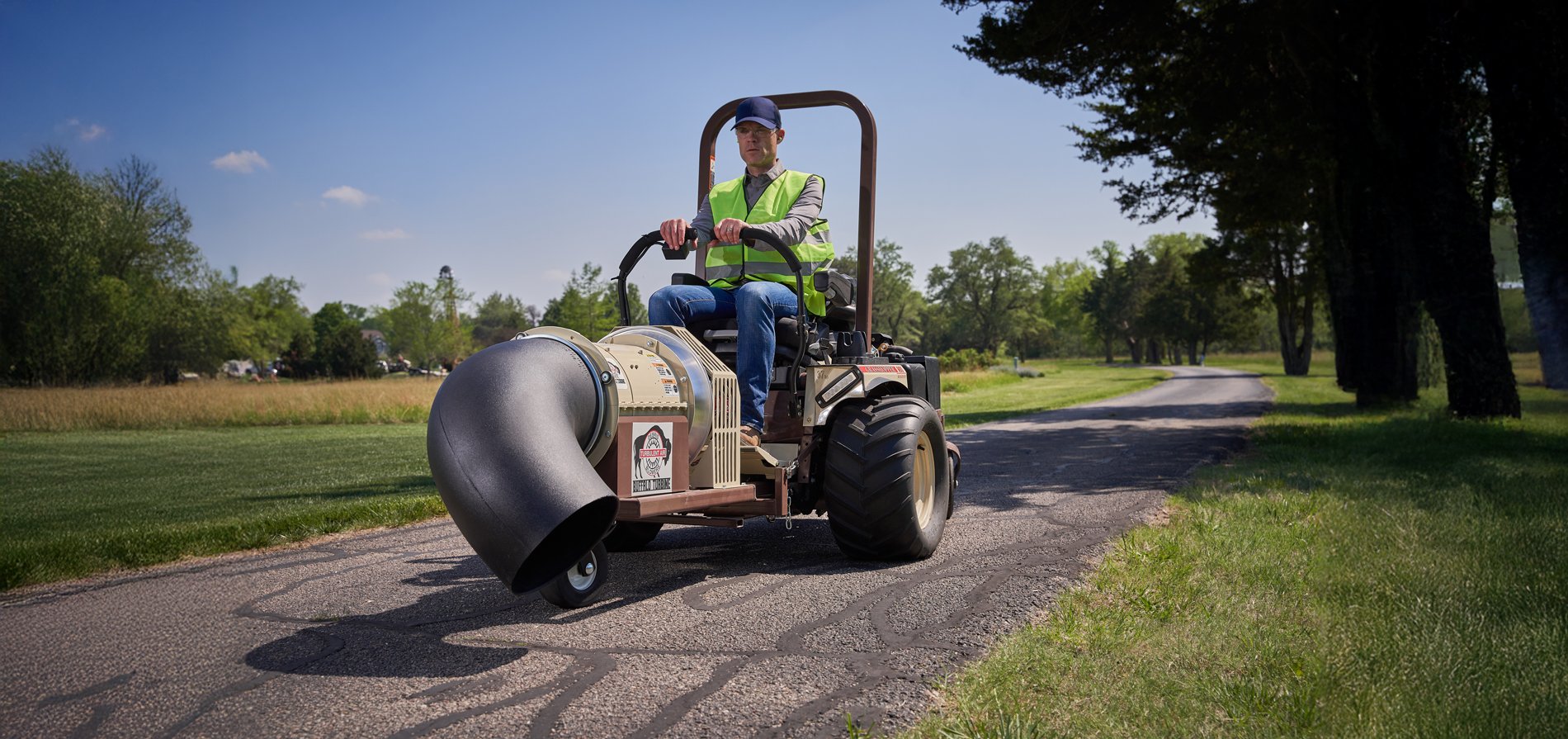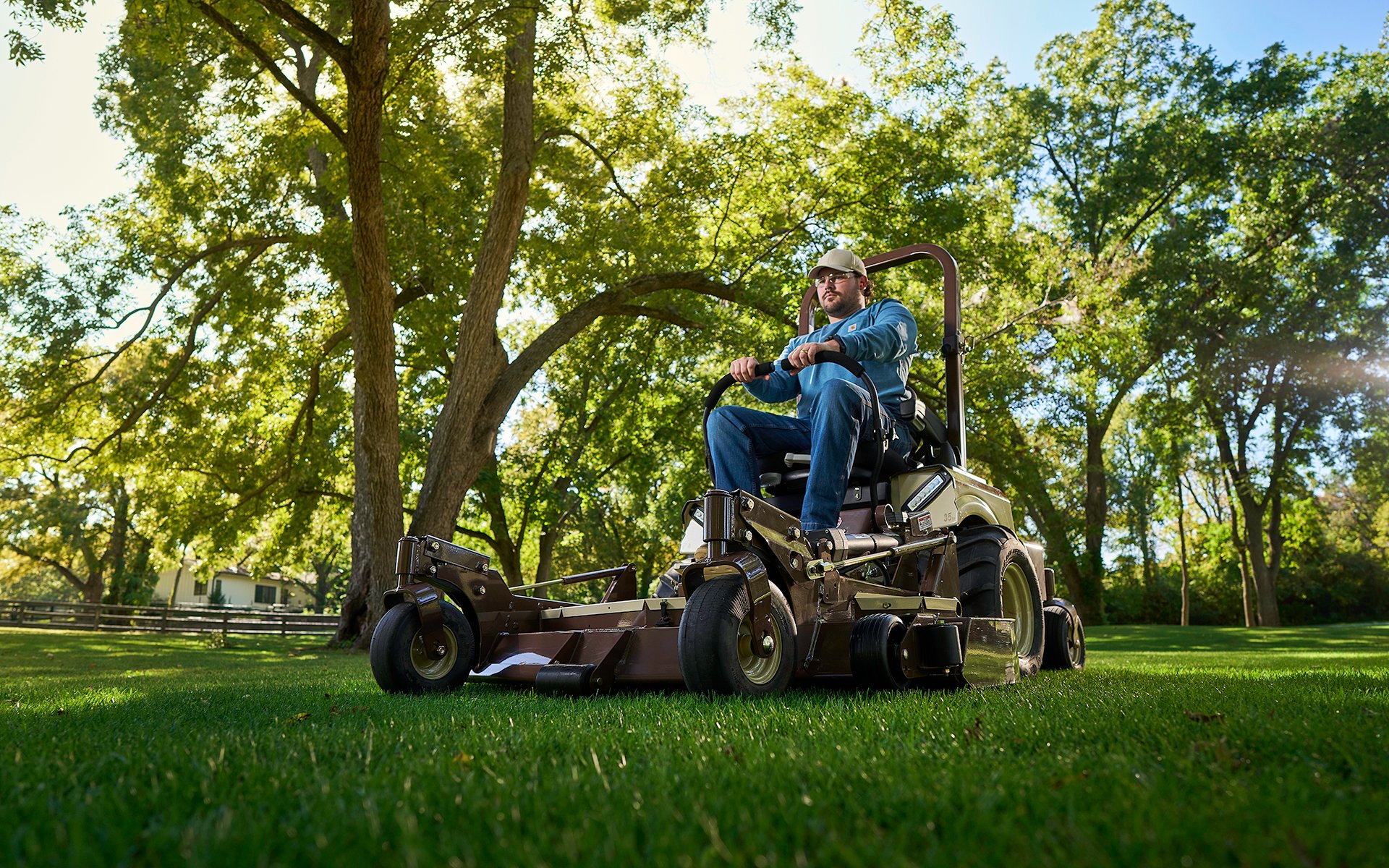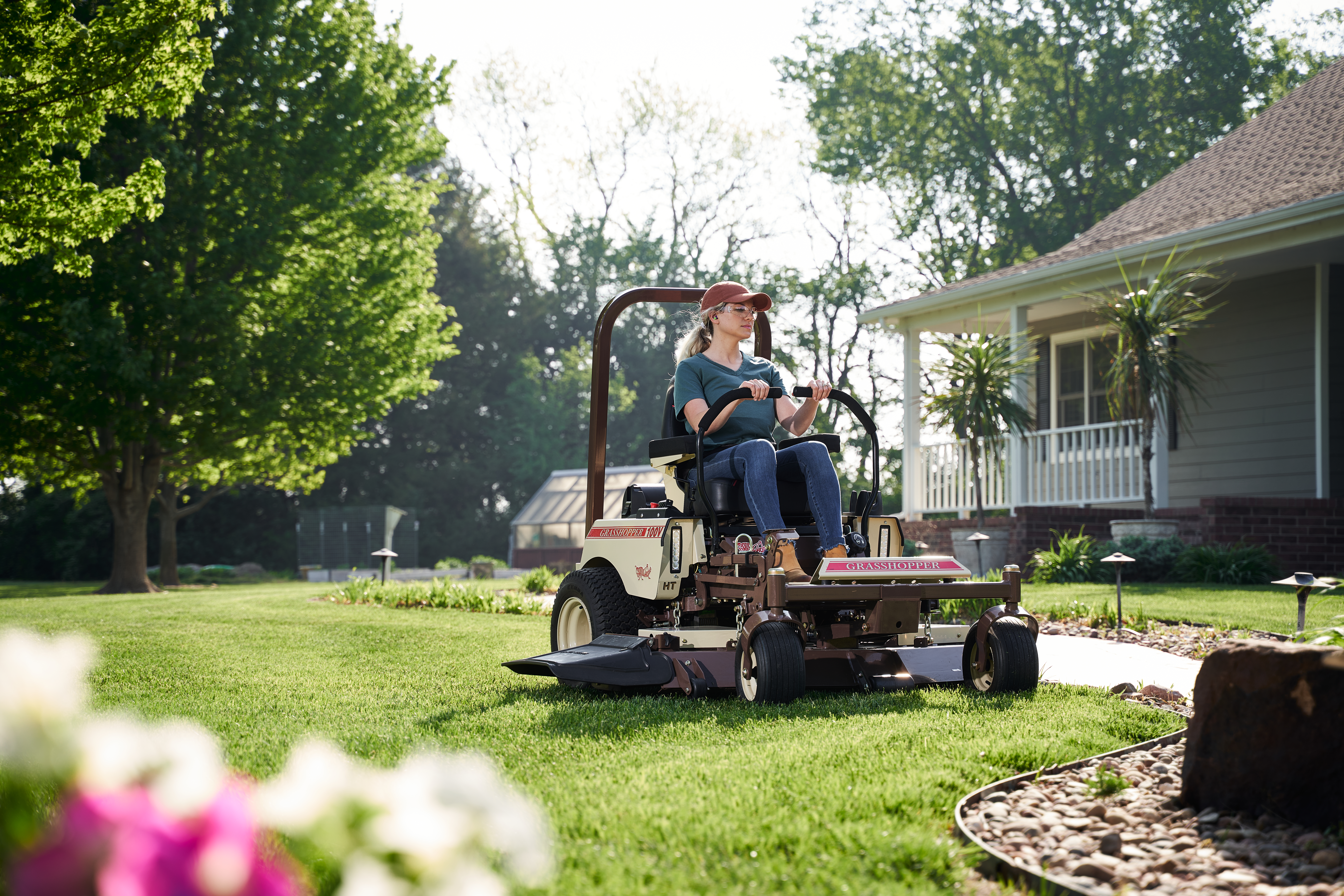In order to maintain the healthiest, most attractive lawn possible, horticulture experts recommend an ideal grass length for each type of turfgrass. For example:
- Tall Fescue 3 - 4”
- Fine Fescue 2.5 - 4”
- Bluegrass 2.5 - 3.5”
- Ryegrass 1.5 - 4”
- St. Augustine 2.5 - 4”
- Zoysia 1.5 - 2.5”
- Bermuda 1.5 - 2.5”
- Bahia 3 - 4”
Notice that each grass type has a range of recommended cutting heights. The best lawn maintenance companies take that into consideration from one season to the next.
As a general rule, it’s ideal to maintain lawns a bit longer during the hotter summer months. But when looking to truly tailor your mowing and maintenance regimen to the season at hand, other factors should also be taken into consideration.
Fall and Winter
When things start to cool down in the fall, you can feel comfortable lowering the cut height a bit. That said, be sure to train crews to monitor conditions on the ground. Just because it’s September doesn’t mean it can’t still be 90°F and dry.
Early fall is also a great time to aerate because the cooler temperatures allow the lawn to recover better. Grasshopper’s PTO-driven AERA-vator™ coreless aerator attachment can greatly improve productivity compared to other types of aeration equipment. Additionally, overseeding after aerating is another beneficial fall service because the soil temperature is still warm, the air temperature is cooler, and weeds have stopped germinating. This one-two punch of fall services will help set your customers’ lawns up for success come the following spring.
Fall also means leaf cleanup. With a good mower deck that’s properly designed for mulching, mulching leaves can be a great approach. Mulching saves time because crews don’t have to haul leaves away from a property. Mulching leaves also adds valuable nutrients back into the soil. On the other hand, if the volume of leaves is too overwhelming and/or the customer wants you to haul them away, Grasshopper offers PowerVac™ Collection Systems for both its FrontMount™ and MidMount™ mowers. This provides an efficient way to vacuum up leaves while mowing.
As you work through the fall months toward your final cut of the season, shoot for the lowest recommended height for the grass type you’re maintaining. Shorter grass will be less prone to matting and disease over the winter months. Avoid going too short, though, as cold winter temperatures could harm the root system.
If you’re in one of those southern areas where infrequent mowing goes all through the winter, shoot for a cut height in the middle of the recommended range. That’ll keep lawns clean and manicured, but still protect the grass from those overnight cold snaps.
If you happen to be in an area where mowing stops during the winter, that doesn’t mean you have to put your Grasshopper mower away. Grasshopper offers numerous snow removal implements for its FrontMount mowers to help you plow, blow and sweep all winter long.
Spring
Many lawn maintenance companies find it profitable to offer a spring dethatching service. Early spring is ideal for cool-season grasses, while later spring is ideal for warm-season grasses.
Grasshopper offers a Tine-Rake™ Dethatcher attachment for use with Grasshopper FrontMount mowers. When paired with Grasshopper’s FrontMount PowerVac Collection System, crews can increase productivity by dethatching a lawn and vacuuming up the debris all at once.
While typically best performed in the late summer to early fall, spring aeration may also be a good idea. This could be the case if crews notice severe compaction on a property during spring cleanups.
With respect to spring mowing, it makes sense to lean toward the shorter end of the ideal cutting height range. That’s because, under normal conditions, spring temperatures are cooler and the benefits of longer grass, i.e., shading and cooling the soil, aren’t as important. That said, crews should be trained to monitor conditions on the ground. Unusually hot or dry conditions may warrant raising the cutting deck up a notch.
Unusually wet conditions may also warrant some adjustments. Keeping up with aggressive spring growth is always a challenge. Horticulture experts recommend cutting every few days so no more than one-third of the grass is cut at a time. But when you’re on a weekly contract, that rule can be difficult to adhere to.
The art of double-cutting can come in handy. Some mower operators like to repeat the same pattern, which helps make those stunning stripes shine even more. Others like to mow in a perpendicular direction on the second cut to make a checkerboard pattern.
Mowing crews could also consider collecting their grass clippings when spring growth is hard to keep up with. Grasshopper offers PowerVac Collection Systems for both its FrontMount and MidMount mowers. The time spent disposing of clippings could more than offset the time spent cleaning up messes.
Summer
When the summer months usher in hotter temperatures, consider raising your cut height to the top end of the recommended range for your grass type. Longer grass helps shade the soil, block out weeds, and facilitate deeper root growth.
The agronomic benefits of returning clippings to the lawn also become especially important when it’s hot. Mulching, in particular, helps the soil retain moisture while adding valuable nutrients and organic matter back into the lawn. That organic matter encourages microbial activity which is also great for the soil, and even helps control thatch. That’s right–unless you are mowing extremely long grass, mulching can actually improve the thatch situation in the lawns you maintain.
To that point, it’s important for maintenance crews to continually monitor conditions on the ground throughout the summer months. If there’s been a lot of rainfall and the grass is still growing aggressively, bagging the clippings every few weeks may be worth considering. That will help avoid adding too much organic matter back into the lawn, which could ultimately increase the opportunity for fungal disease in wet, humid conditions.
On the other hand, when conditions on the ground are warmer and dryer, the frequency of mowing could be reduced if contracts allow. Remember, mowing during a heat wave or drought can actually harm the grass–and clients should know that. Crews might be better off doing a little more weeding and pruning one week while the lawn gets a break.
There are also some opportunities for maintenance crews to provide add-on services as you get into the later summer months. Case in point, late summer to early fall is a great time to aerate and overseed both cool- and warm-season grasses.
Regardless of which season it is, always mow with sharp blades. And always alternate between at least two mowing patterns to avoid making ruts in the lawn and training the grass to bend in one direction. Those essential year-round best practices, coupled with smart seasonal adjustments, will have your maintenance crews operating more productively, while delivering the kind of standout service the best landscape management companies are built on.





